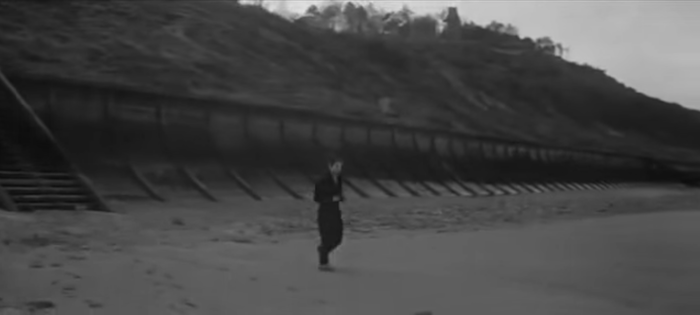Ask the Professor: Why does “400 Blows” end on a freeze frame? What was influential about it?
ScreenPrism: Why does 400 Blows (1959) end on a freeze frame? What was influential about this choice?
Professor Julian Cornell: I can see why people were upset by it at the time. If you ask me why Butch Cassidy and the Sundance Kid (1969) ends with a freeze frame, it’s because of 400 Blows (1959). It’s an audacious thing to do because one of the contracts between an audience and a director (and the other people who make the film) is resolution.
The end of The 400 Blows is a resolution, but it’s not the one that you’re supposed to get from a coming-of-age story. A coming-of-age story is supposed to chart the passage to adulthood, and this story just ends. If you say that the end point of a coming-of-age story is supposed to be “Now you’re a man or woman,” that’s very shallow. It’s almost saying, your life is over now, you’re old enough, and you’ve learned whatever lesson you were supposed to learn. The 400 Blows is ongoing. It basically says — again more truthfully — that this is the end of this chapter.
I’m sure Truffaut didn’t plan to make sequels when he made The 400 Blows. It sets itself up for a sequel, but they weren’t planning that. What the filmmakers are trying to say is: this is the conclusion of this part of this character’s life. This is the conclusion of this experience that the director had and the actor had — the portion of their lives that this reflects. It’s not really inconclusive— it’s just the end of this part of the story.
In the last shot of Antoine running along the beach, it’s not that he wants to see the beach; it’s that his mother says that he wants to see the beach. So when he gets to the beach, is it because his mother said, You should go look at that, or this is what he wants? He gets there, and now what? But that’s often what happens and how life goes.

Antoine (Jean-Pierre Léaud) running along the beach
He’s escaped from juvie. He’s going to get caught and brought back — we’ve already seen what’s happened with the other kids, and that’s what’s happening to him eventually. What Truffaut and the people working on the film want to leave you with is, they don’t want to dictate exactly how you’re supposed to feel about the experience that you just watched. They leave it open-ended by making this final image somewhat inscrutable, forcing you to figure it out for yourself.
I prefer films that leave a lot for us to decide on our own. They don’t spell out everything, and certainly this film doesn’t. What it leaves you with at the end is the need to reflect back on the meaning of this experience for the characters, the director and for you. It’s not going to answer it that simply for you. It’s a resolution that is inconclusive, which people find contradictory, but I don’t.
SP: Would you find this more of a novelistic technique, because often novels leave you more to imagine in an ending?
JC: Yes. By necessity, because when you read a novel you have to interact with it in a different way. The ending of The 400 Blows could be seen as literary. Truffaut was very into books. He was very well-read. He got the idea for Jules and Jim (1962) from a trashy book that he read browsing around in a bookstore.
Our understanding of what movies were, up to this point in time, [was altered after the French New Wave]. One of the innovations of the French New Wave is to leave you with ambiguity and movies that are inconclusive because you’re supposed to relate to them differently as an audience member. It’s not about spelling everything out for you. Even in Bicycle Thieves (1948), it’s not that people complain about the ending, but they point out that the ending is open-ended. It kind of is but kind of isn’t. It resolves the plotline, and it’s very clear what’s going to happen now.
In The 400 Blows, on the other hand, it’s completely unclear what’s going to happen now. Because that’s the way people’s lives are. It will be whatever Antoine makes of it. You have to see the other five films to find out what happens to that guy.
I love that The 400 Blows ends in a freeze frame. Maybe I’m just used to it. But I can imagine people seeing it at the Cannes film festival in 1959, without any advance warning, going, Wait, what happened? The movie’s over now? Because it’s part of the contract [between filmmaker and audience]. Part of what’s going on in the French New Wave is reorienting the relationship between the artist and the audience – making it much more intimate, interpretive and collaborative in a way. Respecting the audience. Part of that is understanding that the audience knows what a film is supposed to be and trying to offer them something different – offer something that is qualitatively and aesthetically different from the movies they’re familiar with. And this movie wonderfully does that.
Read more from Ask the Professor: Why is the therapist scene in “400 Blows” so iconic?

